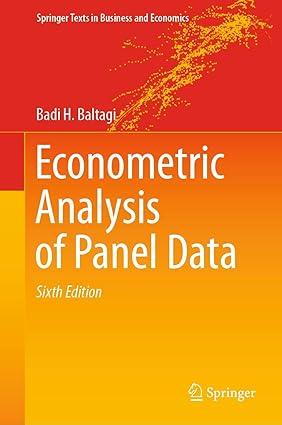Culver and Papell (1997) test for unit roots using the inflation rates of 13 OECD countries. With
Question:
Culver and Papell (1997) test for unit roots using the inflation rates of 13 OECD countries. With individual country tests, they find evidence of stationarity in only four of the thirteen countries. However, they reject the unit root hypothesis both for a panel of all thirteen countries and for a number of smaller panels consisting of as few as three countries. The inflation rate is calculated by differencing the logarithm of the consumer price index. This data was obtained from the International Monetary Fund's International Financial Statistics. All series start in February 1957 and end in September 1994. The data is available from the Journal of Applied Econometrics data archives.
(a) Replicate Table I from Culver and Papell (1997). Show that using the ADF test (with the lag levels provided in that table), the null hypothesis of unit root can be rejected at the 5\% level for only three of the thirteen countries: France, Netherlands, and Japan, and can be rejected at the \(10 \%\) level for Norway.
(b) Perform the panel unit root tests (with individual country effects but no trend) provided by EViews. Show that the conclusion is basically the same as that reached by Culver and Papell (1997). Their results reported in Table III indicate rejection of the null hypothesis of unit root for all countries.
Step by Step Answer:






